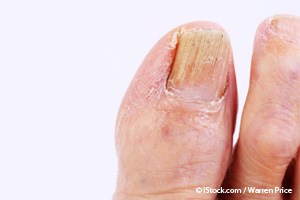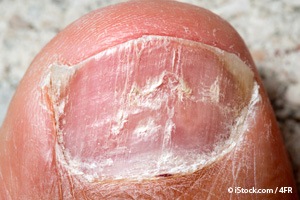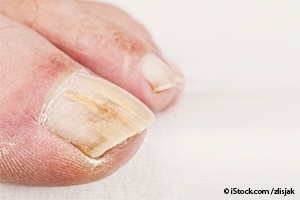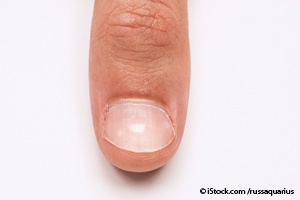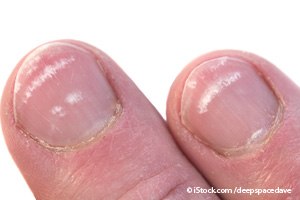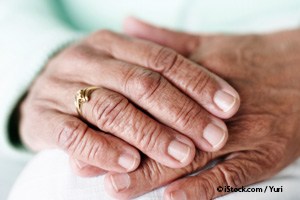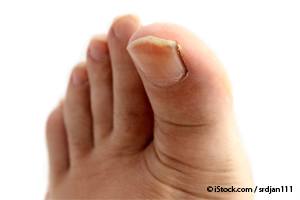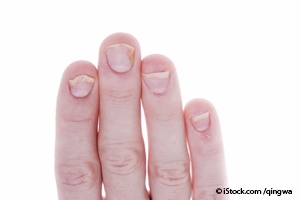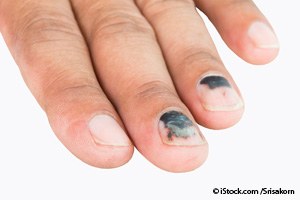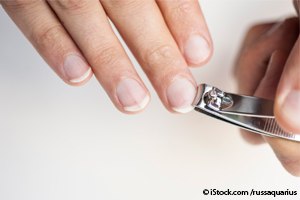Did you know that your nails can be so much more than just a platform for nail art? They can tell a lot about your health condition if you just pay more attention to the changes that might occur.
For instance, ordinary nail thickening or discoloration can indicate a certain health issue connected with your kidneys, liver, heart, blood, lungs, etc.
The shape, color, texture, and even the growth rate of your nails can act as a window into your body. The growth rate depends on your diet, health condition, medications, and the aging process.
So, if you notice any discoloration, swelling, or changes in thickness or shape, it’s best to consult a dermatologist. Even though it might not be anything serious, it’s best to check to prevent an underlying health condition from worsening. Diabetics are one example of people who can notice nail problems.
Here are ten nail symptoms and the potential meaning behind them.
10 Nail Symptoms and What They Mean
1. Yellow Nails
Sometimes the nails can turn yellow because of nail polish, acrylic nails, smoking, etc. But, if the yellow discoloration is accompanied by crumbly and thick nails, the problem might be a fungal infection.
Although rarely, yellow nails can be associated with diabetes, thyroid disease, respiratory disease, or psoriasis.
2. Cracked or Brittle Nails
In most cases, dry, cracked, and brittle nails are related to lifestyle factors. Examples, are frequent use of nail polish remover, spending more time with your hands underwater (swimming, washing dishes), living in a low humidity region, and exposure to chemicals (like cleaning products).
Splitting and cracking can also indicate hypothyroidism or fungal infection. On the other hand, brittle nails can be caused by a lack of vitamin A, vitamin B biotin, or vitamin C.
3. Clubbing
This nail condition is characterized by enlarged nails curved downward. This nail symptom can indicate oxygen deficiency in the blood and lung disease. What’s more, it can be linked to heart disease, kidney disease, AIDS, and inflammatory bowel disease.
4. White Spots
Usually, white spots on the nails are caused by nail trauma. They are not dangerous and will disappear on their own. However, in some cases, it might indicate a fungal infection.
5. Horizontal Ridges
According to the dermatologist at the Cleveland Clinic in Ohio, John Anthony, M.D., horizontal ridges or Beau’s lines appear due to trauma, high fever caused by pneumonia or scarlet fever, and other serious illnesses. This nail symptom usually appears in more than one nail.
Also, Beau’s lines can indicate uncontrolled diabetes, psoriasis, severe zinc deficiency, and circulatory disease. Furthermore, Mees’ lines are another type of horizontal nail ridge that can occur due to Hodgkin’s disease, arsenic poisoning, leprosy, carbon monoxide poisoning, or malaria.
6. Vertical Ridges
This nail condition is typical for older people and is not dangerous. The vertical ridges might become more prominent with age. Sometimes they can occur as a result of magnesium deficiency, lack of vitamin B12, or other nutrient deficiencies.
7. Spoon Nails
If your nails curve upward you might have hemochromatosis (excess absorption of iron), iron-deficiency anemia, hypothyroidism, or heart disease.
8. Pitting
Multiple pets or dents on the nails can indicate Healthline. Also, nail pitting can happen as a result of hair loss or Reiter’s syndrome.
9. Dark Discolorations
If you have painful growths or black streaks on your nails it’s best to visit a doctor. This is because in some cases dark discoloration on nails can be a symptom of melanoma.
10. White Nails with a Strip of Pink
Terry’s nails are known to be white with a narrow pink stripe at the top. They can be a signal of congestive heart failure, liver disease, or diabetes. Also, they can appear with aging.
Do You Bite Your Nails?
In most cases, nail symptoms occur as a result of trauma, systemic problems, or lifestyle factor, including the habit of nail-biting. These people are susceptible to a skin infection that appears around the nails known as paronychia. So, when a person chews their nails, yeast, bacteria, and other microorganisms can enter through abrasions, causing redness, swelling, and pus around the nails.
Biting your nails can cause a bacterial infection which as the American Academy of Dermatology explains, is one of the most common nail problems.
Usually, people start this unhealthy habit in their childhood and quit it gradually or abruptly with aging. Here are a few helpful tips to kick the habit of nail-biting:
- Notice when you bite your nails most often. Is it that while you’re watching TV or when you’re bored? Write the triggers down and try to avoid them as much as you can;
- Another option is to use some electrical tape or band-aids to wrap your fingertips, thus preventing biting them;
- Make sure your nails are always trimmed short and manicured;
- You can try doing some activities such as knitting to keep your hands and fingers busy;
- Consider Emotional Freedom Techniques (EFT), habit reversal training, or another kind of behavioral therapy;
- Apply some hot sauce, vinegar, or other commercially-bought products to your fingertips to give them an unpleasant taste.
Healthy Diet for Healthy Nails
Most people in the U.S. are not getting the adequate amounts of vitamins and minerals needed for the optimal function of their bodies. So, lack of nutrients can lead to many health disorders, including nail, skin, and hair problems.
Your nails need protein from healthy sources like free-range eggs, whey protein, and grass-fed meat. Moreover, your nails need vitamins, minerals, and antioxidants found in berries, leafy greens, and whole foods.
Vitamin B7, biotin, is one of them. Besides strengthening your nails and hair, this vitamin helps in metabolizing carbs, fats, and amino acids. Also, it helps build keratin which creates nails. Some great sources of Biotin are egg yolks from organic, free-range eggs.
Furthermore, omega-3 fatty acids from an animal source are also recommended, as opposed to omega-6 fats. The latter can cause inflammation which leads to heart disease, depression, diabetes, and rheumatoid arthritis. 1:1 would be the perfect ratio for omega-3 to omega-6 fatty acids. Unfortunately, most Americans consume 20 to 50 times more omega-6 fats than omega-3s, mostly from vegetable oils.
Soft or brittle nails can indicate a distorted omega-3 to omega-6 ratio. That’s why you need to avoid vegetable oils and consume more omega-3 fatty acids from animal sources like sardines, krill oil, or anchovies.
Helpful Tips for Nail Care
Besides eating a proper diet, proper nail care requires protecting your nails from excessive exposure to chemicals or water.
For instance, minimize the use of polish remover, nail polish, and artificial nails, as well as use cotton-lined rubber gloves when washing the dishes.
Also, you can gently buff your nails to make them nice and smooth without using nail polish. What’s more, simple buffing will boost the circulation in your nails which will make them stronger.
You can use manicure scissors or clippers to keep your nails trimmed short which will make them stronger.
In addition, you can rub some coconut oil on them for extra benefit. The bad habit of picking at your cuticles will damage the nail bed and cause damage to the live tissue, so you might try quitting it.
Ultimately, don’t cover your unusual and unpleasant nail symptoms with manicures or artificial nails. Instead, visit a holistic healthcare provider to determine the root cause of your nail problem.
Source Dr. Mercola | Time | Mayo Clinic | Prevention | Cleveland Clinic | American Academy of Dermatology

